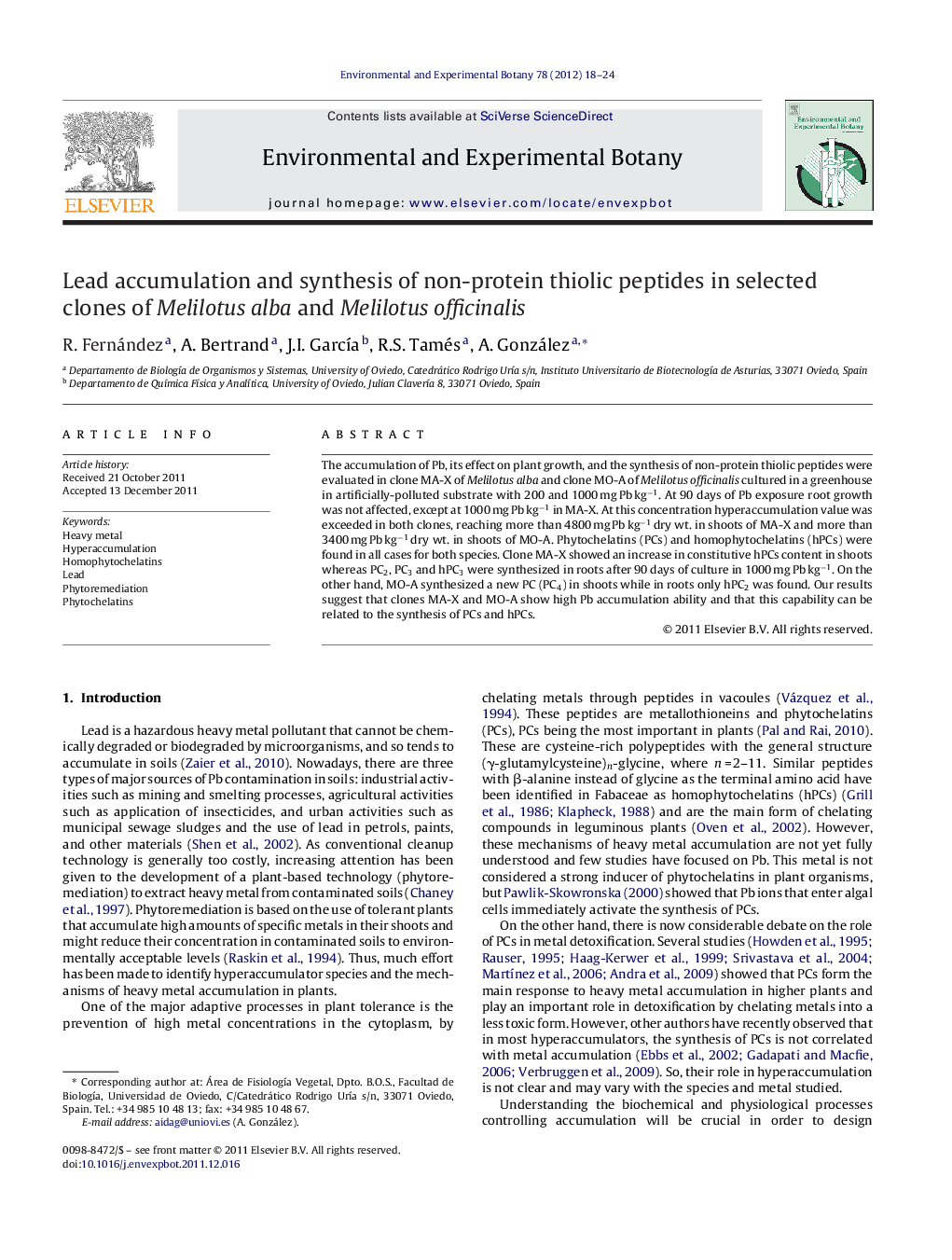| Article ID | Journal | Published Year | Pages | File Type |
|---|---|---|---|---|
| 4554731 | Environmental and Experimental Botany | 2012 | 7 Pages |
The accumulation of Pb, its effect on plant growth, and the synthesis of non-protein thiolic peptides were evaluated in clone MA-X of Melilotus alba and clone MO-A of Melilotus officinalis cultured in a greenhouse in artificially-polluted substrate with 200 and 1000 mg Pb kg−1. At 90 days of Pb exposure root growth was not affected, except at 1000 mg Pb kg−1 in MA-X. At this concentration hyperaccumulation value was exceeded in both clones, reaching more than 4800 mg Pb kg−1 dry wt. in shoots of MA-X and more than 3400 mg Pb kg−1 dry wt. in shoots of MO-A. Phytochelatins (PCs) and homophytochelatins (hPCs) were found in all cases for both species. Clone MA-X showed an increase in constitutive hPCs content in shoots whereas PC2, PC3 and hPC3 were synthesized in roots after 90 days of culture in 1000 mg Pb kg−1. On the other hand, MO-A synthesized a new PC (PC4) in shoots while in roots only hPC2 was found. Our results suggest that clones MA-X and MO-A show high Pb accumulation ability and that this capability can be related to the synthesis of PCs and hPCs.
► Selected clones MA-X and MO-A hyperaccumulate Pb in the shoots. ► Pb accumulation is related to the synthesis of thiolic peptides in MA-X and MO-A. ► MA-X synthesized de novo PC2, PC3 and hPC3 in roots treated with 1000 mg Pb kg−1. ► MO-A synthesized hPC2 in Pb-treated roots and PC4 in shoots at 1000 mg Pb kg−1.
